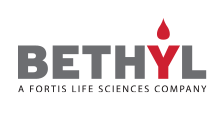Rabbit anti-CAR Antibody

Catalog #
CAR
Human
IHC
,IP
,WB
Rabbit
Polyclonal
Whole IgG
between 335 and 365
IgG
Unconjugated
Antigen Affinity Purified
Product Details
Human
Mouse,
Bovine,
Rat
Human
2 - 8 °C
1 year from date of receipt
Coxsackievirus and adenovirus receptor (CAR) is a component of the epithelial apical junction complex that is essential for the integrity of tight junctions. CAR is proposed to function as a homophilic cell adhesion molecule. It is also thought to be involved in transepithelial migration of polymorphonuclear leukocytes (PMN) through adhesive interactions with AMICA1/JAML located in the plasma membrane of PMN [taken from the Universal Protein Resource (UniProt) www.uniprot.org/uniprot/P78310].
Alternate Names
46 kD coxsackievirus and adenovirus receptor (CAR) protein; CAR; CAR4/6; coxsackie virus and adenovirus receptor; coxsackievirus and adenovirus receptor; coxsackievirus B-adenovirus receptor; CVB3-binding protein; HCAR; HCVADR
Applications

